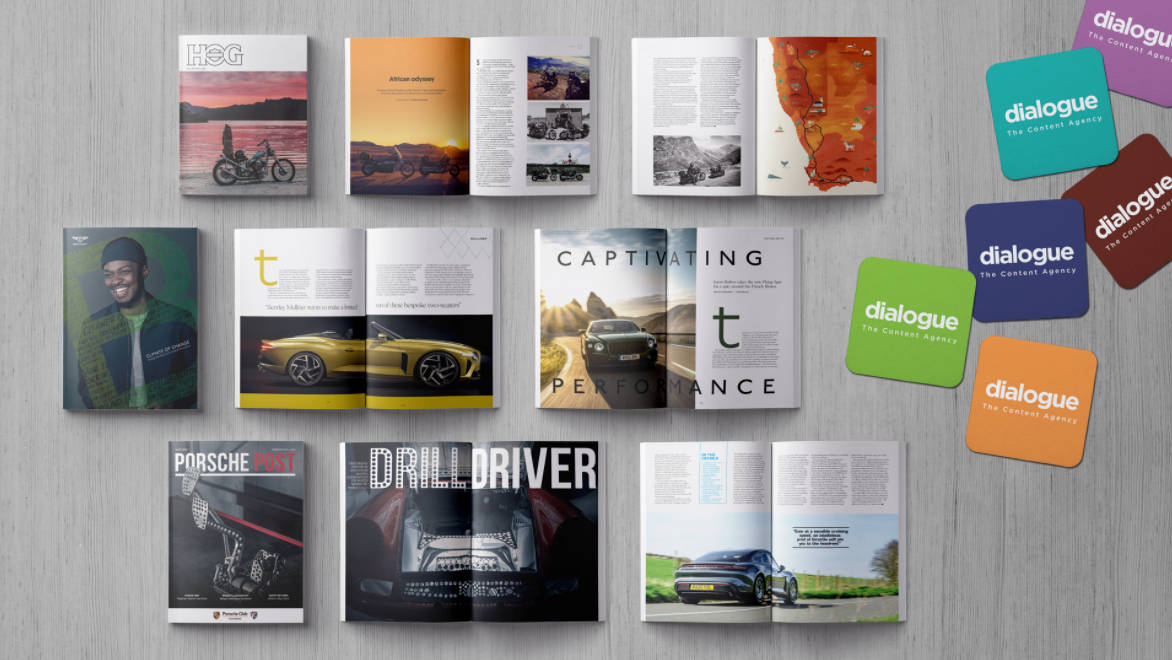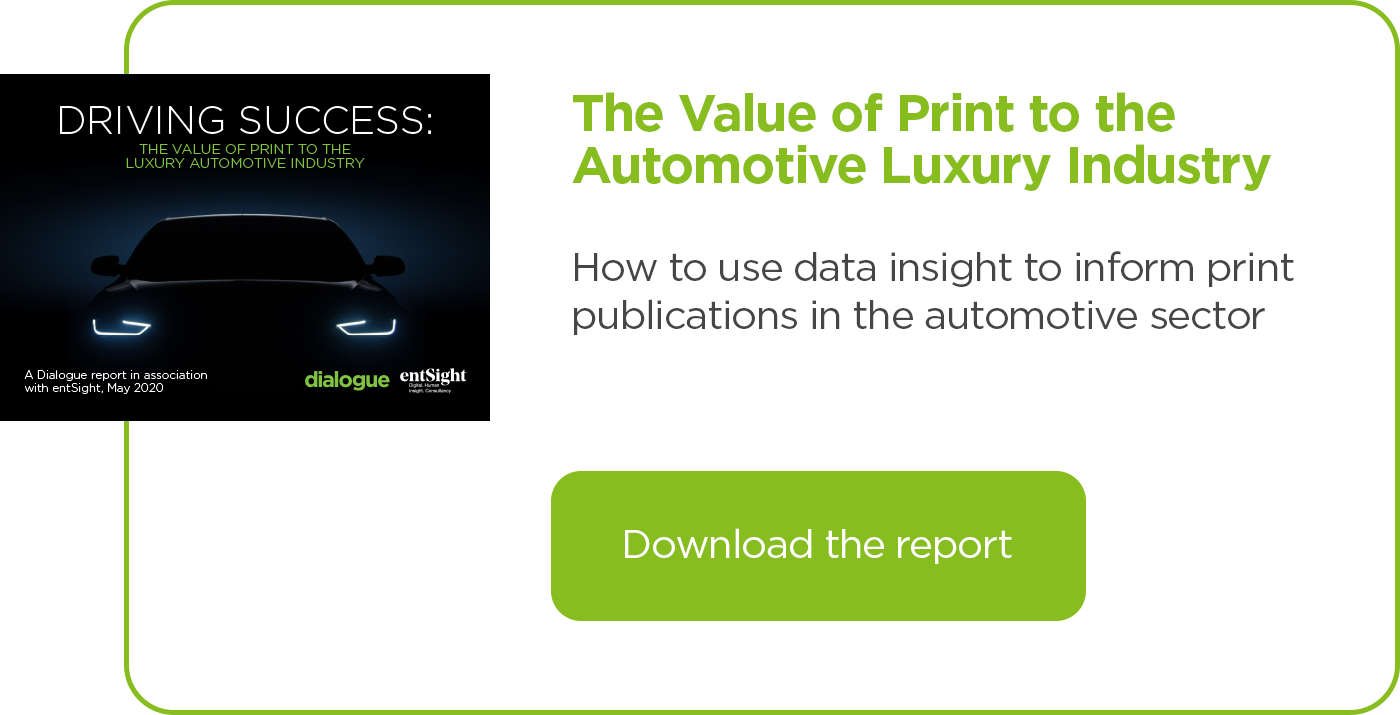
Reassessing the value of print media in 2020
Mary Munford,
-
DOWNLOAD
Your Content Marketing Checklist >

-
REQUEST TODAY
A Content Consultation >

Nobody would have expected the value of print media to be a topical discussion in 2020. However with the arrival of Covid-19 and a simultaneous tiring of so much time on screen, there's now a new look at print media advantages. And so, marketers need to be looking at what they’re doing through print afresh - and especially looking at the value of print advertising.
As Mark Twain once famously (almost) said, “Reports of my death have been greatly exaggerated.”
Enjoying, savouring and digesting a printed magazine takes time, something that has been in such short supply for so many of us. No wonder the time hungry have been migrating to the instant sugary rush of digital snacking. But COVID-19 has changed all that and its impact on our media behaviour means there's a reassessment of the value of print advertising as well.
Value of print magazines in lockdown
The countless consequences of lockdown life include the gift of extra time and perhaps it’s no coincidence that the value of print at this moment in time is on the rise. Interest in print magazine subscriptions is flourishing, according to Carola York, vice president, publishing, at digital partnering specialist Jellyfish. She reports that in the UK, the level of interest in print subscriptions has increased by at least double that in the digital equivalent since lockdown began, with some magazine categories seeing subscription page views rising by up to 500 per cent.
"Magazines are proving to be of huge interest… thanks to their ability to keep readers entertained, inspired and distracted.”
Carola York, Vice President, Jellyfish
Another interesting piece of research looking at the value of print was also published during the weeks of lockdown though with fieldwork carried out prior to COVID-19. Kantar quizzed thousands of respondents in in eight markets, including China, the UK and US, and discovered that print remains the most trusted medium with high distrust of social media as a source of news and information.
"Social media… was ranked as the least trusted medium, with just 17% of respondents citing the likes of Facebook and Twitter as a reputable source.”
Kantar DIMENSION study 2020
The situation reached critical point in 2020 when a number of brands boycotted Facebook because of their content moderation practices. When the context of the advert is so key, the value of print advertising should be re-evaluated as it offers more control for the brand.
When print works: quality time
So there are some positive indicators for print. But there’s no escaping the fact that the fallout from the COVID-19 pandemic could make or break print titles that were already struggling. It was recently reported in the Press Gazette that of 10 UK titles up for review by magazine publishing giant Bauer Media, one will move to a digital/event-based format, one will merge and three will close while talks continue regarding the sale of five others. Nevertheless,
Bauer’s own research has identified that magazines became a key lockdown companion, with 70 per cent more people reading publications. Interestingly, the same research suggests that magazines tick several boxes when it comes to a renewed interest in purchases that comfort and indulge.
“Forty-four per cent of people are making non-essential purchases to keep themselves and their locked-down companions entertained and rewarded and to ease their way through these difficult times.”
Affluent consumers have also been very much enjoying print in lockdown, says LUUX Media, which recently surveyed the spending intentions post-lockdown of ultra-high net worth individuals.
The Luux Ultra Afluent Consumer Survey found that only 20 per cent said they never read printed media (magazines or newspapers) while almost a third (31 per cent) reported that lockdown had given them extra time to read, enabling them to enjoy print media much more than previously. So when it comes to the readerships with whom print will continue to find an appreciative and luxurious home, it’s with the financially rich. Again, there's a knock-on effect for the value of print advertising.
Affluent consumers
That group’s interest in print certainly reflects our experience here at Dialogue, where our portfolio of print titles associated with luxury brands include Bentley Magazine and Tower Revue, the magazine of the exclusive St Moritz hotel Badrutt’s Palace.
For example, at Porsche Club GB, with whom we work on its flagship Porsche Post, a huge 83 per cent of respondents in the 2020 membership survey said they valued the magazine – the highest rating of all membership benefits, even outstripping the 81 per cent who value the association with the highly desirable and reassuringly expensive Porsche marque itself. Meanwhile, our new report Driving Success: The Value of Print to the Luxury Automotive Industry, see below, highlights that the top 10 per cent and 25 per cent wealth groups discovered new brands and products more through print than other channels. Our research was carried out with 50,000 global luxury automotive consumers, representing the highly discerning and extremely affluent consumers.
Why print works
US writer and editor Cable Neuhaus, a self-confessed magazine obsessive and long-term participant in the industry, has identified two key factors in ensuring a title’s survival.
“The print magazines most likely guaranteed a long horizon will be those that focus principally on two broad subject areas: success (in life, in business) and appreciation (of pursuits, of things). Count on the ‘S&A’ magazines increasingly to be marketed as premium products… They will be beautiful to see and touch.”
You might also want to throw aspiration into the mix. Creative consultant David Hicks gives a great example in a recent white paper from global media content trade body FIPP with UPM Communication Papers exploring how prestigious brands were preparing for 2020.
“I’ve just been working on the most recent GQ Watch Guide – it’s an annual print directory of the latest luxury men’s watches. Some of the models inside sell for quite phenomenal prices – £964,000 for a watch? These guides and others like them are popular with readers and advertisers and quite collectable.”
Success and Appreciation
The people with what you might call S&A appeal certainly feature in the readership of Forbes, read by the wealthy movers and shakers of US society for more than a century. The value of print with that type of audience is obvious.
Last year, after the print edition underwent a major design revamp, chief content officer Randall Lane explained the rationale for the move at a time when the magazine was already sitting pretty on a historically high readership in print of more than six million. “Success stems from reinvention during periods of strength, rather than during distress,” he wrote under the heading ‘Why we chose to reimagine print’.
Going on to analyse the magazine’s rebirth in the context of the key question for print – “What drives a superior print magazine experience – something you would rather consume in a glossy, portable format than any other?” – he defined the USP of a magazine as its nourishing and deeply satisfying “full meal of facts and ideas that contrast with the à la carte nature of digital surfing.”
“A story on a website or in an app (while it can benefit from movement and audio) is never going to appeal to the touch and smell senses and is always going to be limited in terms of creativity” – Zoë Francis-Cox, Agency Director, Dialogue.
Print and the future: building brand communities
These unique qualities also make print an ideal medium through which to reach out to and reward communities built around a specific brand. An exclusive, high-quality publication – like our award-winning Bentley Magazine – offers an additional ‘community membership’ experience that excites, delights and informs while also telling the reader they are part of something rather special.
Building brand affinity and engagement is one benefit, alongside offering community members carefully targeted and timed opportunities to further discover and explore the brand, through digital content to which only they have access or through events and experiences. Their privileged relationship also opens the door to recruiting a select group of trusted brand advocates and ambassadors.
Clearly, for many magazines to survive and thrive in whatever the new normal turns out to be is going to be a challenge. But it’s also clear that magazines have unique attributes which suggest that, while nothing is certain, they are not to be consigned to the recycling bin of history just yet.
For the last word, it’s back to that white paper from FIPP and UPM Communication Papers and the thoughts of UPM’s Thomas Waltasaari,
“It’s essentially about giving a 3D experience that you aren’t going to get on your screen. It’s the feel of it, the weight of it. It’s about creating a moment that allows you to become part of the brand."
Read more insightful articles
See more from the blogThe future of luxury hospitality – Part 3: Wellness and the quest for meaning
The future of luxury hospitality – Part 2: Purpose and sustainability
The future of luxury hospitality – Part 1: Personalisation and technology
Behind the lens at the European H.O.G. Rally: how brand immersion drives creative agility
Proud to be a winner of industry awards, recognised as content marketing experts in print and digital media.













